Is it Time to Replace Your Dental Crown? Your Guide
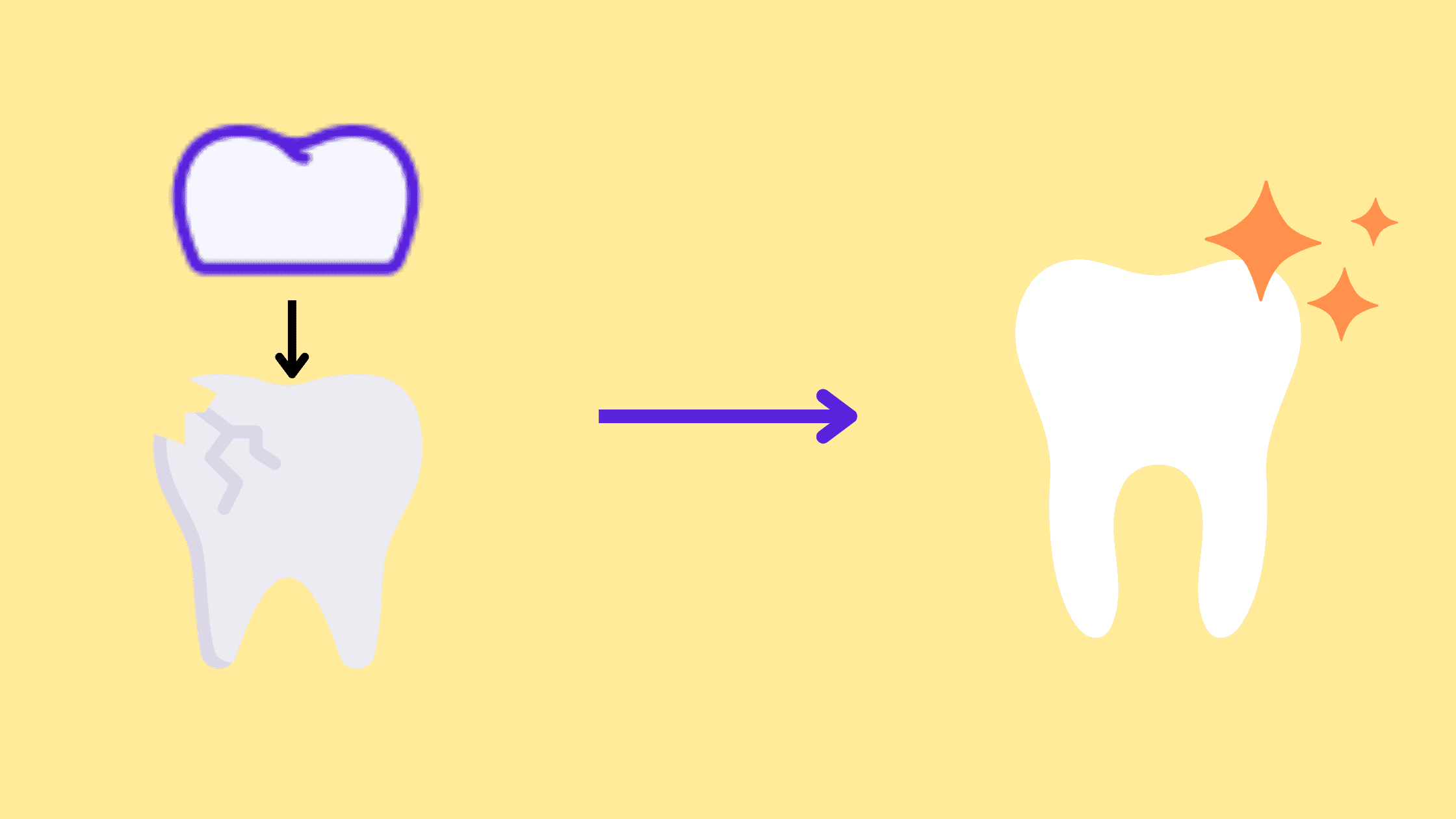 When properly made and well cared for, dental crowns can last for many years—sometimes even decades.
When properly made and well cared for, dental crowns can last for many years—sometimes even decades.
But just like natural teeth, crowns aren't immune to aging. Over the years, they can wear down, loosen, or become damaged, eventually needing to be replaced. This is completely normal and part of the natural life cycle of a tooth restoration.
On the other hand, without proper care, even the best crowns can fail much sooner—sometimes within just a few years or even months.
In this article, we’ll cover everything you need to know about replacing a dental crown—why it may be required, how the procedure works, and what to expect.
In this article...
When Should You Replace Your Crown?
Dental Crown Removal Procedure
New Crown Placement
How to Care for Your New Crown
When Should You Replace Your Crown?
A dental crown should be replaced when it no longer does its job—protecting the tooth underneath.The most common situations where your dentist might recommend a replacement are:
- Tooth decay beneath the crown
- Tooth infection or need for a root canal
- Unhealthy gum tissue
- Cracked or fractured crown or tooth
- Poor appearance
1. Tooth Decay
Even though a crown covers and protects a tooth, it doesn’t make it immune to decay. If the crown is worn down or has edges that trap plaque, cavities can form on the tooth underneath. The tricky part is that this kind of decay often goes unnoticed—because it’s hidden under the crown.
Watch out for signs like dark discoloration near the crown, a gap forming between the crown and your tooth, increased sensitivity, or persistent bad breath. If you notice any of these symptoms, see your dentist as soon as possible to avoid more serious damage.
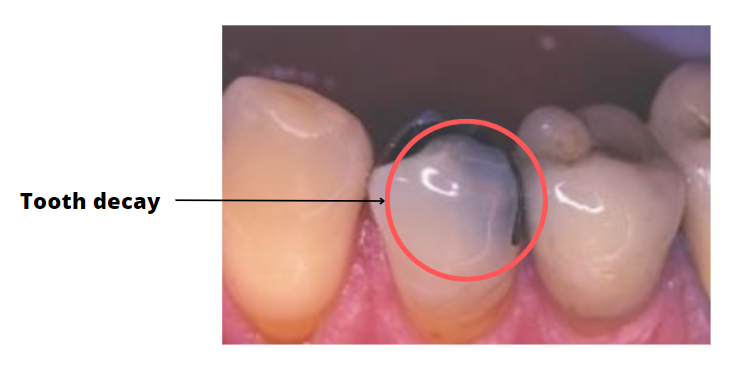
2. Infection
If decay under the crown is left untreated, it can reach the inner part of the tooth and affect the nerves. When this happens, bacteria can spread through the root canals and lead to an infection or even a painful abscess.
In such cases, a root canal may be needed, followed by the placement of a new crown.
3. Gum Irritation or Damage
A crown that’s poorly shaped, sits too high or too low, or becomes rough over time can irritate the surrounding gum tissue. This can lead to pain, swelling, inflammation, or even gum recession.
To fix this, your dentist may need to adjust or replace the crown to ensure it fits properly, protects your gums, and restores your bite alignment.
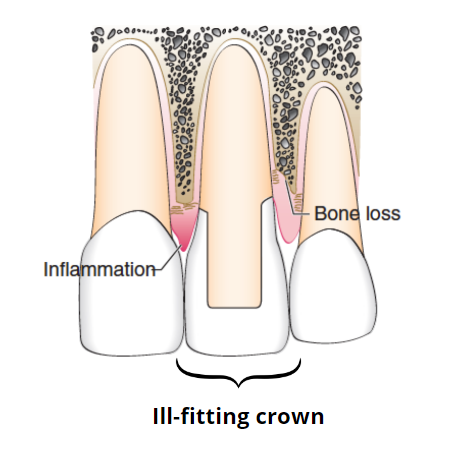
4. Fracture of the Tooth or Crown
Crowns are built to be strong and long-lasting, still, they can break or crack under excessive pressure. This is especially true for crowns made of ceramic (porcelain).
This can happen from chewing hard foods, biting something too hard, or habits like teeth grinding and clenching (also known as bruxism).
In some cases, the damage may extend to the tooth beneath the crown. If the fracture is significant, your dentist may recommend replacing the crown to properly restore and protect your tooth.
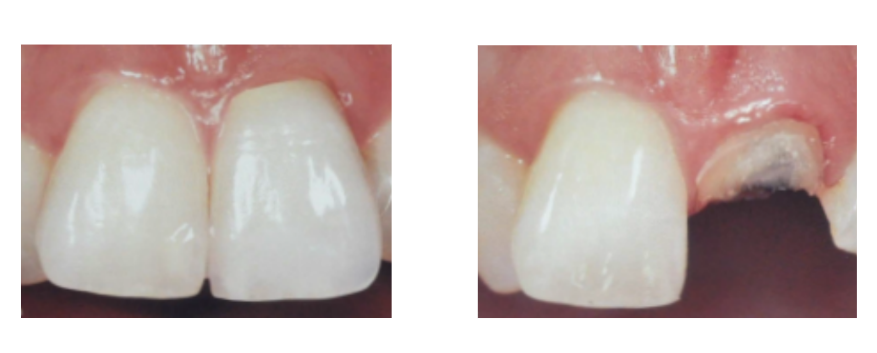
5. Cosmetic Reasons
Sometimes, a crown may need to be replaced not because it’s damaged, but because it doesn’t look the way you want it to—especially when it’s on a front tooth that shows when you smile or speak.
Common cosmetic issues include a crown that doesn’t match the color of your natural teeth, has an unnatural shape, or simply looks fake.
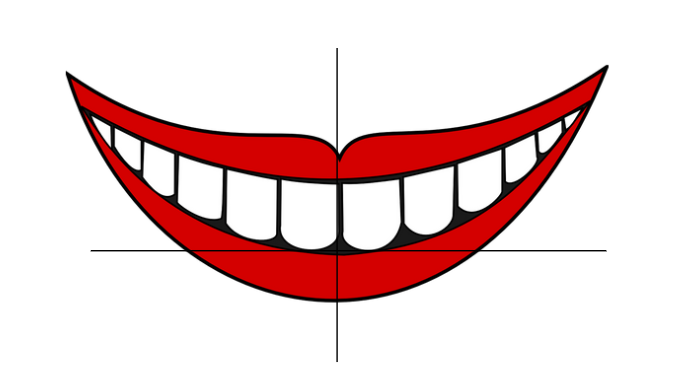
Dental Crown Removal Procedure
Replacing a dental crown is quite similar to the original crowning process. The main difference is the first step: removing the old crown and treating any underlying issues such as decay, cracks, or infection.There are several techniques dentists use to remove a crown, and the choice depends on whether the old crown needs to be preserved or if it’s no longer usable.
Some methods can be slightly uncomfortable, so your dentist may use local anesthesia to numb the area and ensure the procedure is pain-free.
Here are the most common crown removal techniques:
1. Using Vibrations to Loosen the Crown
This method involves applying ultrasonic vibrations (similar to those from a dental scaler) to help loosen the cement holding the crown in place. After a few minutes, the crown may become easier to remove.
This technique is gentle on both the tooth and the crown and is often used when the goal is to preserve the crown for reuse.
2. The Richwil Crown Remover
The Richwil method uses a special thermoplastic material that softens when heated. Your dentist places it on your crown like chewing gum. Once it cools and sticks, you're asked to bite down firmly, then quickly open your mouth. This creates a strong pulling force that can dislodge the crown.
It’s a relatively comfortable technique and works especially well for temporary crowns (with a 100% success rate) and about 60% of the time for permanent ones.

Removing a crown with the Richwil Crown Remover
3. Manual Removal with Hand Instruments
Your dentist may also use hand tools like crown removers and dental pliers to lift and remove the crown. While this approach can be effective, it may cause more pressure or discomfort compared to gentler methods and carries a higher risk of damaging the tooth and crown.
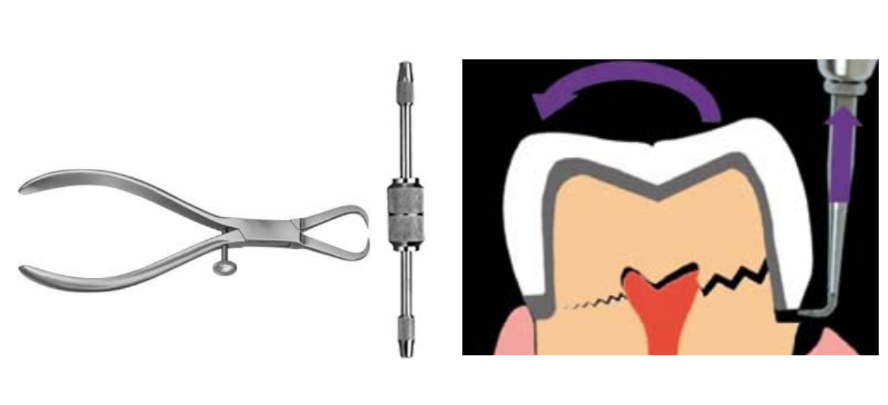
Removing a crown using hand instruments
4. Cutting the Crown with Rotary Instruments
This is the fastest and most effective method—especially when the crown is no longer needed. Your dentist uses rotary tools to cut through the crown, splitting it into two halves that are then removed one by one.
However, this technique destroys the crown, so it’s not suitable if you hope to reuse it.
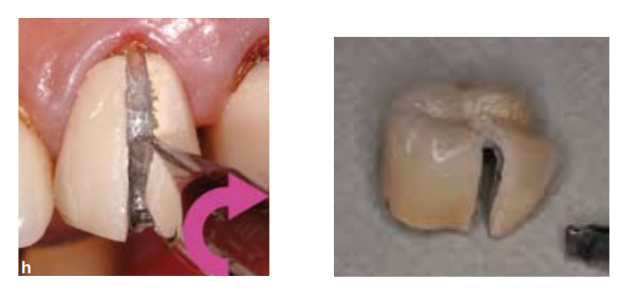
Removing a crown by cutting it off
New Crown Placement
After the old crown is removed, your dentist will clean the area, remove any decay or damaged parts, and reshape the tooth to prepare it for the new crown.In some cases, the old crown can be reused after adjustments. But if the crown or tooth is too damaged, your dentist will likely recommend making a new one.
Next, impressions of the prepared tooth are taken to create a custom-made crown that fits perfectly. While you wait for the permanent crown, a temporary one is placed to protect the tooth and maintain comfort.
Finally, the temporary crown is removed and replaced with the final crown. Your dentist will then make any final adjustments to ensure the new crown fits well, looks natural, and feels comfortable when you bite or speak.
How to Care for Your New Crown
Taking proper care of your dental crown can help it last for many years. Here are some essential tips to keep it in great shape:- Practice Good Oral Hygiene: Brush your teeth twice a day using fluoride toothpaste, and floss daily to clean between your teeth and around the crown. You can also ask your dentist if using mouthwash or fluoride supplements is right for you. Good hygiene helps prevent cavities and gum disease that could affect the tooth under the crown.
- Avoid Biting on Hard Objects: Chewing on hard items like pens, ice cubes, or using your teeth as tools can put excessive pressure on your crown. Over time, this can lead to cracks, chips, or even cause the crown to come loose.
- Wear a Nightguard If You Grind Your Teeth: If you grind or clench your teeth at night (a condition known as bruxism), wearing a custom nightguard can protect both the crown and the tooth beneath it from the chewing forces.
- Visit Your Dentist Regularly: Regular check-ups and professional cleanings allow your dentist to monitor your crown’s condition and catch any problems early before they become serious.
- Address Problems Promptly: If you feel pain, sensitivity, or notice that your crown feels loose or damaged, contact your dentist right away. Early treatment can prevent further problems and limit treatment to repair rather than full replacement.
- Clinical complications in fixed prosthodontics https://www.sciencedirect.com/science/article/abs/pii/S0022391303002142
- Removal of failed crown and bridge https://www.ncbi.nlm.nih.gov/pmc/articles/PMC3917642/
- Richwill Crown and Bridge Remover